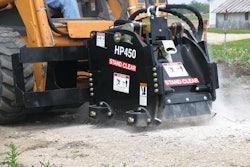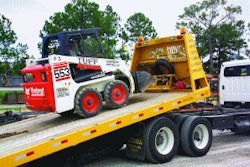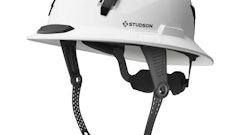This is an interesting dilemma contractors live with, especially in this current confusing environment. There is no doubt both sides of the coin have to be considered, but there are times when one side takes precedence over the other. Now is one of those times.
I heard this morning on the AM biz news that homebuilders are complaining about a shortage of carpenters. Talk to any of the equipment dealers and they are looking for experienced techs. It seems our population of “builders” in the U.S. has dwindled — unless they have all fled to energy sectors, leaving their former work opportunities behind.
Given the lack of work, it’s not surprising that breadwinners had to find something else to do, and that professionals went to where the work is. What this means for contractors is job costs will be tough to control because there may be problems with the workforce.
If workers are not as experienced as they were previously, it will be tougher to manage work. Since managing work had better be high on your priority list in this time of low-margin work, it will be especially important to those contractors short on reserves. This management is probably more important for a smaller contractor because it’s easy to run into cash flow problems.
First Get Cash Flow Under Control
When it comes to planning let’s get one thing straight: there will not be much need for long-term planning unless we attend to the short term.
Contractors need consistent positive cash flow now in order to get to the point where long-term planning is required. Speaking from experience, contractors today have to manage a day at a time and produce positive results until work flow becomes more predictable, and they are able to hire proper support staff to help with this review.
Specifically, contractors have to control their daily cash flow, which means keeping fixed costs to a minimum — and I mean a minimum. Said another way, “Pay for what you use every day.” Having a day without a job should mean costs for that day are very minor because 80% of your costs are variable. This is why we see contractors renting equipment instead of buying it. Buying that piece of equipment creates a daily fixed cost of ownership that you have to contend with no matter whether you have work or not.
There is a contractor I am familiar with that continues to find work because he has a reputation for getting the work done on time at a very competitive price. Needless to say, it is a tense work environment, but he gets the job done and does not accept excuses from anyone. Mess up the schedule and you are out. Come in with a bid that is not as skinny as it can be and you don’t get the work. Once you make the team, you will continue to get work as long as you stay a team player. In exchange for all the stress of working on these jobs, you get paid 15 days after your invoice is received. What this tells us is this contractor knows how to manage his business, is adequately capitalized and, even though his bids are the lowest, he still makes money.
I guess the point here is once you have your operation running parallel to the one noted above, you can then start thinking about long-term planning. Let’s face it, long-term planning takes into account the growth and value of the business and how much of that value gets into your bank account. Long-term planning also covers ownership transition, retirement planning and tax planning. In short, it is how much value you get form your life’s work net of taxes.
Managing Growing Pains
We are talking a completely different story when it comes to getting from Tier 1, where you have to manage cash flow day to day, to Tier 2, where you have a much bigger business with field and administrative employees, along with systems in place to manage the day to day operations. All of a sudden, you have employees to manage and take care of; new opportunities to convert to business; federal and state tax issues; and liquidity metrics to meet that will cover payroll and accounts payable.
While it is great to be at this level, Tier 2 presents a great number of management problems that can turn the tide very quickly if not handled properly. The biggest will be taking on excessive debt with the monthly nut they create only to have a couple of big jobs go bad on you. It’s always very tempting to buy that new piece of construction equipment or truck or building or system, etc., until your liquidity disappears in a matter of months, leaving you with insufficient time to right the ship. (Remember 2008?)
In the end the story remains the same:
- Keep fixed costs manageable.
- Monitor cash flow daily.
- Create a monthly business plan and compare it to actual every week of the month.
- Keep tax planning and payments up to date.
- Have adequate reserves on hand to get through any downturn.
- Always be in the money with your equipment (portion that is worth more than debt).
- Take action when you see cash flow being threatened.
No matter whether you are Tier 1 or 2, this checklist must be reviewed daily. It is tough to take action if you don’t know the ship is sinking.



















